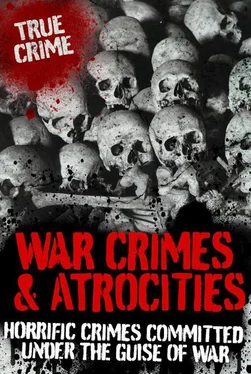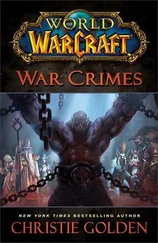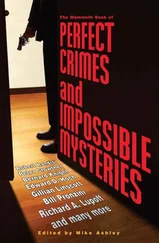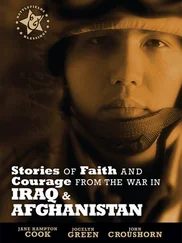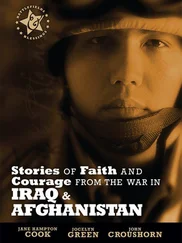In the first incident 35 inmates were killed in the Welikada gaol on 25 July, and just two days later a further 17 were killed. The attack is thought to have taken place because two supposed guerilla leaders, Sellarasa Yogachandiran, leader of the LTTE, and Ganeshanathan Jeganathan were being held under the death sentence for the murder of a policeman. When the assailants came across the two men, it is reported that they were forced to kneel while they had their eyes gouged out with iron bars. Then they were stabbed to death and their testicles were wrenched from their bodies.
After these killings, nine prisoners were moved to a padlocked hall, upstairs in the same block. Among these men were Dr Rajasunderam, Sir Lanka’s Gandhian leader, two Catholic priests and a Methodist minister. The nine men were convinced that there would be a further attack, and they were given assurances that they would be protected, but no further measures were taken.
It was about 2.30 p.m. on 27 July, when the nine men heard whistling and jeering coming from outside. One of the priests looked out of the high window and saw prisoners breaking in from a nearby compound. They were wielding axes, iron bars, pieces of firewood and sticks, and there was not one prison guard in sight. The mob had already killed 16 people in the cells on the floor below and they ran up the stairs and started to try and break open the padlocked door. Dr Rajasunderam cried out to the men, ‘Why are you trying to kills us, what have we done to you?’ At that moment the door burst open and he was hit on the side of the neck with an iron bar and blood literally spurted several feet. The remaining eight men decided that they had better defend themselves and started to break up the tables and chairs and, using the legs, they managed to defend themselves. The mob threw bricks and the eight men retaliated by throwing them back. Pieces of firewood and an iron bar were thrown as weapons and this continued for about half an hour. The mob shouted, ‘You are priests, we have to kill you!’ Eventually the violence was ended when the army intervened using tear gas.
Although the official report says that the killings at Welikade gaol were the result of a prison riot, the story does not really ring true. If this were the case, then how did the prisoners get out of their cells without the aid of the guards, and where did they get their weapons? According to sworn statements, the assailants claimed that they were given the instructions by the prison authorites, who ordered them to kill all those prisoners being held at the young offenders ward, which is where the Tamil prisoners were kept.
The families of those murdered on those two days only learned about their death via a news broadcast on the radio. What is worse, they were not even given the chance to say a final goodbye as the men were buried before their families got to see the bodies.
TIMELINE OF CONFLICT
Since the beginning of the conflict, the blood of innocent civilians has stained the hands of the Sri Lankan forces. In many cases, the attacks have been the result of the forces suffering some form of setback in their fight for power. Below is a list of just some of the atrocities that have been carried out between the years 1986 and 1997.
1986
30 November: In attacks on villages in the north-east border, 127 people, mostly Sinhalese, are killed.
1987
21 April: LTTE detonate a car bomb at Colombo bus station, killing 113 people.
7 May: A bomb destroys central telegraph office, killing 14 people.
14 May: 150 killed when the LTTE attack the city of Anuradhapura.
2 June: LTTE stop bus and shoot 33 people, including 29 Buddhist monks.
1988
11 February: Shootings at Duluwewa result in the killing of 34 Sinhalese.
28 February: Further 37 Sinhalese killed at Borawewa.
1 May: Bus is blown up by a landmine in Trincomalee, killing 22 passengers.
14 November: Bus attacked in Trincomalee, killing 27 Sinhalese.
1989
13 April: Car bomb explodes in Trincomalee, killing 51 shoppers.
1990
3 August: When praying at a mosque in Kattankudy, 140 Muslims were killed in machete, gun and hand grenade attack.
12 August: Another 120 Muslims killed at Eravur.
1991
2 March: Deputy Defence Minister Ranjan Wijeratne is killed in a car bomb explosion in Colombo.
21 April: In south-east Moneragala, 21 villagers are killed.
8 July: 27 civilians killed in Batticaloa.
1992
1 September: In Batticaloa 22 Muslims are killed by a bicycle bomb.
15 October: In Palliyagodella 166 Muslims are killed.
1993
23 April: Former Security Minister, Lalith Athulathmudali is killed at a rally in Colombo by LTTE terrorists.
1994
19 January: At Anuradhapura, 15 bus passengers are killed in a bomb blast.
21 March: 22 fishermen killed in Puttalam.
24 November: Opposition leader, Gamini Dissanayake, and 51 others killed by a suicide bomber.
1995
26 May: at Kallarawa, 42 villagers are killed.
7 August: Suicide bomber explodes bomb hidden in coconut cart in Colombo, killing 24 and wounding 40.
20 October: Terrorists blow up two oil depots in Colombo, killing 20 security personnel.
1996
31 January: A truck packed with explosives rams into the Central Bank building, killing 100 and injuring 1,400 people.
4 July: Woman suicide bomber kills 21 civilians and soldiers and wounds 50, including a cabinet minister.
24 July: LTTE explode two bombs on a commuter train, killing 57 people and injuring at least 257.
1997
9 September: Civilian ship attacked in the port of Trincomalee; 32 people killed in a gun battle between terrorists and Sri Lankan navy.
15 October: In Colombo, 11 people killed in terrorist bomb blast and ensuing gun battle.
This is by no means a complete list of all the atrocities that have occurred during the war years in Sri Lanka. One of the latest, and possibly the most horrifying, occurred on 14 August, 2006, when four Kfir jet bombers of the Sri Lanka Air Force dropped 16 bombs on the Chencholai children’s home in Vallipunam. More than 400 schoolgirls were staying overnight at the Chencholai home, and 61 were killed in the unprovoked attack on a nonmilitary location. Another 129 severely wounded girls were rushed to nearby hospitals.
MASS GRAVES UNCOVERED
A former soldier by the name of Somaratne Rajapakse, who had been sentenced to death in June 1998 for the rape and murder of a Jaffna teenager, alleged that the army had buried many ‘disappeared’ Tamil civilians in mass graves near Jaffna town. Exhumation began straight away and the first grave uncovered contained the skeletons of two males. The victims, one with his hands tied with rope and the other blindfolded, were identified as two men in their twenties who had simply disappeared in 1996 after the army took Jaffna. An additional 24 grave sites were uncovered around Chemmani village near Jaffna, which contained a total of over 100 bodies. Forensic experts from both Sri Lanka and abroad reported that the remains showed signs of physical assault and murder. This only accounts for a small proportion of the tens of thousands of people who have been reported as missing at the hands of the security forces, but it proves that major acts of inhumane conduct have occurred over the years of the conflict.
ONGOING HORRORS
The cost to human lives continues day by day, not just those killed in battlefield combat as a result of a ‘take-no-prisoners’ tactic, which has been adopted by both sides, but also to civilians and their exodus from the war-torn areas. Despite planned peace talks the clashes continue, and in October 2006 reports came in of one of the deadliest suicide bombings of the war, when nearly 100 people, mostly Sri Lankan sailors, were killed by suspected Tamil Tiger rebels. The sailors died in a suicide blast, when the rebels drove a lorry loaded withe explosives into a convoy of naval buses. The attack happened near the town of Dambulla and a spokesman who described the attack as despicable said, ‘All these people were without weapons and were simply going on leave.’ In 2006 alone, as many as 2,000 people have been killed, and this is since the ceasefire settlement of 2002, which raised hopes of the war coming to an end. In October heavy battles on the Jaffna Peninsula left hundreds dead, despite commitments by both the government and the rebels to return to the negotiating table. The Tamil Tigers, from their secret jungle base in the north-east of Sri Lanka, show no signs of being defeated by the military of the Sri Lankan army, even though they are vastly outnumbered. All the time the military control the peninsula – which the Tamil Tigers claim to be their cultural heartland – it appears the conflicts will never come to an end.
Читать дальше
